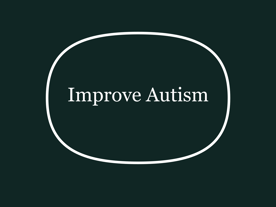A Randomized Controlled Pilot Trial of Oral N-Acetylcysteine in Children with Autism
Authors:
Dean, O. and Berk, M.
Key Findings
Behavioral Outcomes
Irritability: The NAC group showed a significant reduction in irritability compared to the placebo group. Statistical analysis indicated a strong effect (F=6.80; p<0.001) with a large effect size (d=0.96). Improvements were observed as early as week 4 and persisted through weeks 8 and 12.
Stereotypy and Repetitive Behaviors: There was a trend toward improvement in stereotypy on the ABC-Stereotypy subscale (p=0.096; d=0.72) and a significant improvement on the Repetitive Behavior Scale - Revised (RBS-R) Stereotypies subscale (p=0.014; d=0.90).
Social Responsiveness: Improvements were noted in specific subscales of the Social Responsiveness Scale (SRS), including SRS-Social Cognition (p=0.037; d=0.99) and SRS-Autism Mannerisms (p=0.045; d=0.95). However, the improvement in social cognition may be attributed to higher baseline impairment in the NAC group rather than a definitive treatment effect.
Other Symptoms: No significant improvements were observed in hyperactivity, lethargy, or inappropriate speech, though a notable reduction in hyperactivity was seen at week 12 (d=0.72).
Percentage of Children Helped
NAC Group: Based on the Clinical Global Impressions - Improvement (CGI-I) scale, 11 out of 14 children in the NAC group showed some level of improvement (5 were "much improved," 6 were "minimally improved"). This equates to 78.6% (11/14 × 100).
Placebo Group: In the placebo group, 7 out of 15 children showed improvement (2 were "much improved," 5 were "minimally improved"), resulting in 46.7% (7/15 × 100). Thus, a higher percentage of children in the NAC group were helped compared to the placebo group.
Symptoms Improved
Primary Symptom: The most reliable and significant improvement was in irritability, as measured by the ABC-Irritability subscale.
Secondary Symptoms: There were also possible benefits in stereotypy (repetitive behaviors) and certain aspects of social cognition, though these findings were less conclusive. The improvement in social cognition might be influenced by baseline differences rather than a direct effect of NAC.
Safety and Tolerability
NAC was well-tolerated, with minimal side effects, primarily gastrointestinal (e.g., nausea, vomiting, diarrhea). One child in the NAC group experienced worsening agitation and irritability, which resolved after discontinuation and was later linked to severe constipation rather than NAC itself.
Conclusion
The study provides preliminary evidence that NAC may be a useful and safe intervention for reducing irritability in children with autism, with 78.6% of the NAC group showing some improvement compared to 46.7% in the placebo group. The primary symptom improved was irritability, with potential additional benefits in stereotypy and social cognition, though these require further confirmation. These findings support the need for larger, more comprehensive trials to validate NAC's efficacy and explore its mechanisms, such as glutamatergic modulation and antioxidant properties, in treating autism-related behavioral symptoms..
Summary of the Study
The article, titled "A Randomized Controlled Pilot Trial of Oral N-Acetylcysteine in Children with Autism," published in Biological Psychiatry (2012), reports on a 12-week, double-blind, randomized, placebo-controlled trial evaluating the effectiveness of N-Acetylcysteine (NAC) in treating behavioral disturbances in children with autism. Conducted by researchers at Stanford University and other institutions, the study involved 33 children (31 males, 2 females; aged 3.2–10.7 years) diagnosed with autistic disorder. Participants were randomly assigned to either the NAC group (n=15) or the placebo group (n=18), with follow-up data available for 14 children in the NAC group and 15 in the placebo group. The NAC group received escalating doses: 900 mg daily for the first 4 weeks, 900 mg twice daily for the next 4 weeks, and 900 mg three times daily for the final 4 weeks. The primary outcome measure was the Aberrant Behavior Checklist - Irritability subscale (ABC-Irritability), with secondary measures including stereotypy, repetitive behaviors, and social responsiveness.


